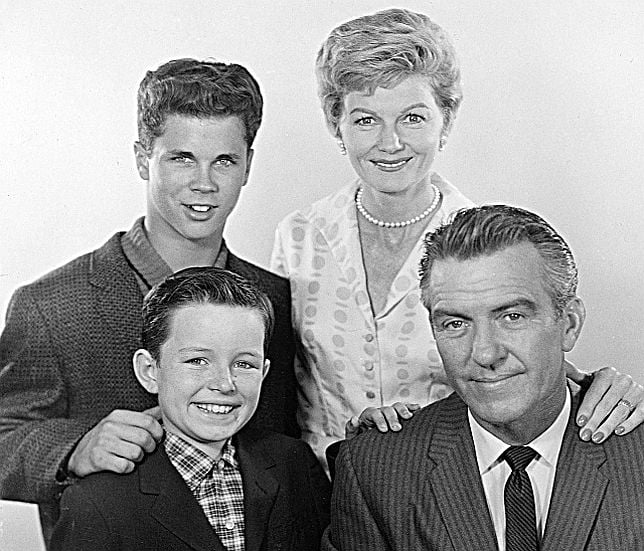

#Leave it to beaver family series
Word of God confirms that series creator Joe Connelly had a friend in the U.S. Embarrassing Nickname: There's much humiliation centered around his nickname being that of an animal and never is an explanation provided for its origin until the series finale, wherein it is revealed that Theodore got his nickname from Wally as a young child mispronouncing his brother's given name as "Tweeter", which eventually became "Beaver".Deadpan Snarker: Often makes sarcastic comments to his sons in The New Leave It to Beaver, such as When trees talk! to Kip when he asks for a stereo speaker.Children Are Innocent: Admittedly naive and impulsive to a fault, but Beaver is the epitome of a 1950s All-American Boy who's afraid of cooties ( at least early on) and has no time for homework, dance lessons, or bathing.The Chew Toy: Many viewers see his pratfalls like getting trapped in a billboard soup cup or being misled into making a goofy face in his yearbook photo as Laser-Guided Karma for his Innocently Insensitive naivety.Beaver is more mischievous and susceptible than guileless, but to his credit, he's a naive young boy trying to utilize his childhood to its fullest potential, and has a childlike enthusiasm for comic books and "messin' around with his pals". Cheerful Child: This trope was played straight at the start of the series, but became downplayed as Beaver getting older made his innocence ambiguous.Characterization Marches On: Becomes a more responsible father over the course of The New Leave It to Beaver.Beaver had a tendency of saying "Yes sir" whenever being confronted by his dad about his wrongdoings, or "No sir" on the flip side.Usually, his parents would accept his apology and give him the proper talk to make sure he doesn't do it again. Can't Get Away with Nuthin': Every time Beaver got involved in a troublesome situation with a disciplinary outcome, he'd always try to cover it up or think of a lie, before eventually confessing to the truth.Butt-Monkey: His second most defining trait behind being Super Gullible (and often the result of that), Beaver is the butt of exploitations at least once per episode, be it antagonism from his older brother Wally or the latter's friend Eddie, cooties, or his friends taking advantage of his gullibility to land him in humiliating predicaments such as being stuck in a billboard soup vat.Beaver would occupy this role in most of the Wally-centric episodes where the writers had nothing much scripted for Beaver to do other than to make obnoxious remarks in his presence while everyone else was trying to have a serious conversation. Annoying Younger Sibling: Wally perceives him as a menace.

ABC knew they had the right actor to portray Beaver when Mathers expressed concern over missing his Boy Scout meeting during his casting call. Beaver is a Cheerful Child with a Verbal Tic consisting of euphemisms and is into baseball, comic books, and get-rich-quick schemes.




 0 kommentar(er)
0 kommentar(er)
